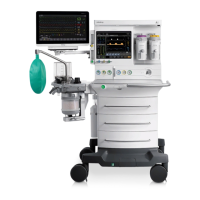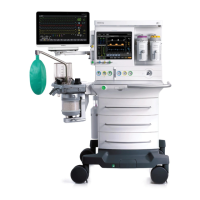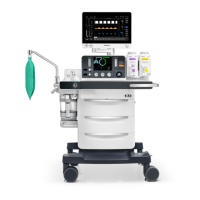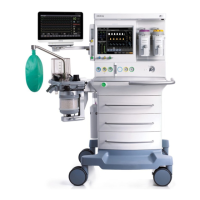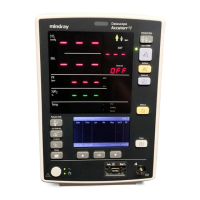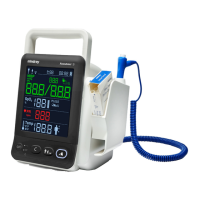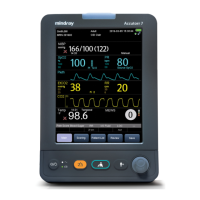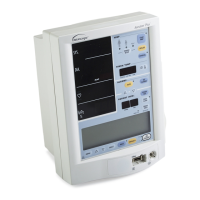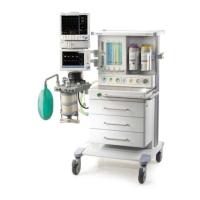Setting Alarm Limits Alarms and Messages
8 - 8 Operator’s Manual of Anesthesia System
8.6 Setting Alarm Limits
Users can set the limits of PEAK, MV, Vte, RR, FiO
2
, EtO
2
, FiN
2
O, EtN
2
O, EtCO
2
and FiCO
2
alarms to align
the alarm conditions consistent with patient needs. The alarm is then triggered when the parameter
value is greater than the High Limit or lower than the Low Limit.
WARNING: During equipment use, pay frequent attention to the alarm limits of
parameters to ensure that they are appropriately set. Setting the alarm
limits to limiting values will render the alarming system unhelpful.
NOTE: When using the anesthesia system, ensure that the alarm limits of each
parameter are set to the appropriate values for the patient.
NOTE: When the anesthesia system restarts within 60 seconds after an power
outage, the system can automatically restore the recent profile. If the
power outage lasts longer than 120 seconds, the anesthesia system will
automatically load the user profile before the shutdown. If the power
outrage lasts between 60 to 120 seconds, the anesthesia system may
automatically restore the recent profile or automatically load the user
profile before the shutdown.
NOTE: If the equipment is powered off for less than 30 seconds and then
powered on, the alarming settings will be restored to the status before
the system was powered off.
NOTE: If the airway pressure monitoring stays lower than the lower limit of
alarm for 20 seconds or one automatic ventilation cycle (depending on
which one is longer), a corresponding alarm will be triggered.
NOTE: If the Vte monitoring stays higher than the upper limit of alarm for
three consecutive cycles, a corresponding alarm will be triggered.
NOTE: If the Vte monitoring stays lower than the lower limit of alarm for three
consecutive cycles, a corresponding alarm will be triggered.
NOTE: In the manual ventilation mode, the system will disable the [Paw Too
Low] alarm, and the PEAK low alarm limit in monitoring parameters
area will display [Off].

